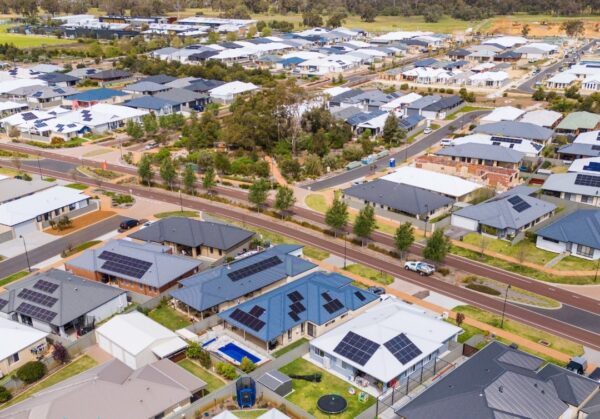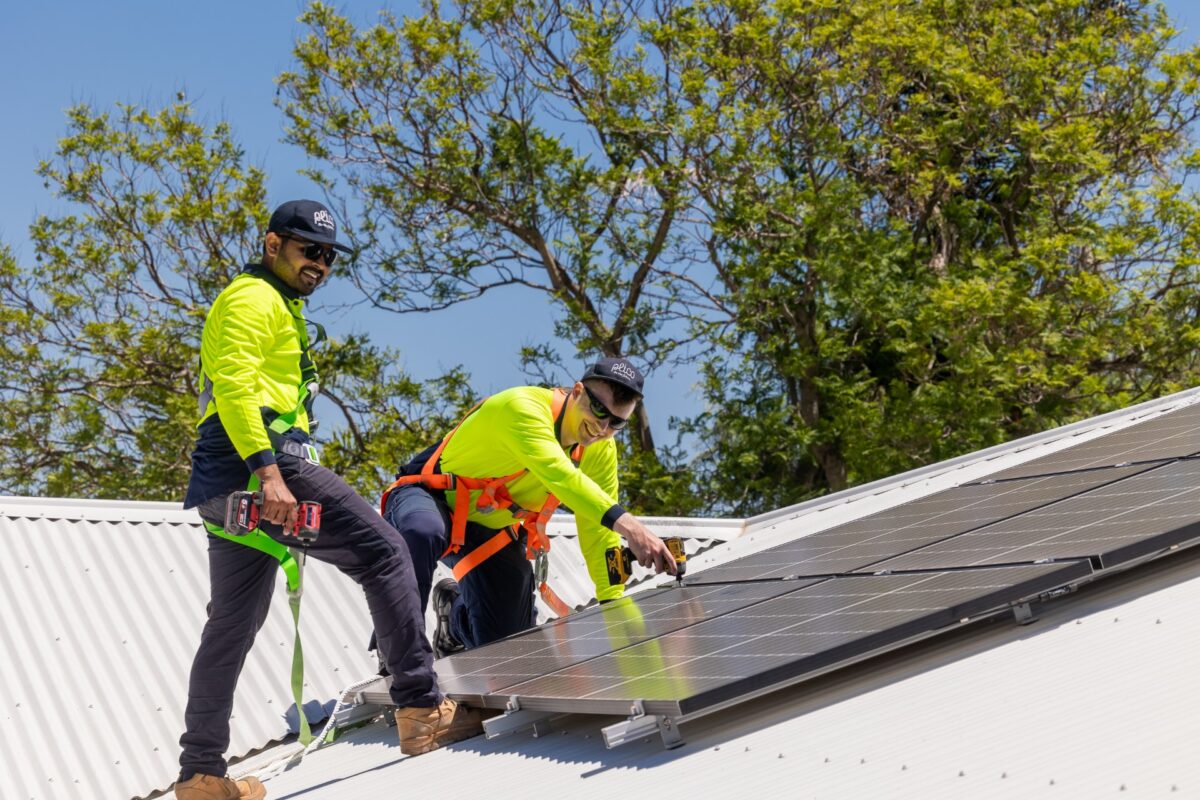Average temperatures in Australia are on the way up, as is the surging demand for power which is putting pressure on the grid. With grid instability comes the potential for blackouts and I expect many families and businesses have already suffered in darkness.
Last summer Western Australia (WA) experienced 49 consecutive days without rainfall. The Bureau of Meteorology said the longest dry spell of similar length was more than a decade ago in 2010. This summer was WA’s third driest on record (since 1876) with mean max temperatures generally above average.
The challenge we have now in Australia, is time is against us: we need solutions quickly to stem grid instability, and the need for rolling blackouts to manage demand.
We’re part way there but we are scrambling to fully transition to a clean energy solution. According to the International Energy Agency, Australia installed the most solar panels per capita of any country in the world in 2022, followed by the Netherlands and Germany. In WA, solar accounts for 21% of power generated for our grid, ranking us second to South Australia amongst the states. It’s something we can be proud of, but solar panels only do half the job and solar power pushed onto the grid is difficult to control. Additionally, only about 7% of solar installations include a battery.
So, what does that really mean for us and the future of our powering our homes, not just in WA but across Australia? We’re clearly great at installing solar panels, aided somewhat by the then incentive of feed-in tariffs, but now we have an audience conditioned to only putting solar panels on their roof. People think they have done everything they can to control energy costs and be part of the renewable energy transition.
Our research indicates people are generally unaware of the benefits of complementing solar panels with a battery system. Like the feed-in tariffs that transformed Australia into a solar panel powerhouse, we need a similar incentive to encourage households to install home battery systems. Because now it’s bigger than just installing a battery system into your home.
That single home battery system when integrated into a Virtual Power Plant (VPP), has the potential to revolutionise our future power grid demand. The VPP introduces flexibility, efficiency, and resilience into the energy ecosystem. It transforms the traditional model of centralised energy generation and distribution, paving the way for a more sustainable and adaptive power grid.

Image: Plico
A VPP is a collection of associated individual, independent household solar and battery systems, known as distributed energy resources (DER), that are united remotely to form a VPP. The Plico VPP uses cutting-edge technology including Amp X which provides its proprietary VPP digital energy platform to enable monitoring, control and optimised dispatch of Plico’s systems.
VPPs can be managed to bring the grid back into balance under both minimum demand and peak demand scenarios. When there is minimum demand, energy supply to the grid is high and energy demand on the grid is low. This can occur in the middle of mild sunny days when solar exports to the grid are high but there is low demand from homes, business and industry. Peak demand is when the opposite occurs; energy supply to the grid is low and demand is high. This usually occurs on hot summer evenings when energy demand increases just as solar exports start to decrease.
When the VPP is activated in a peak demand scenario, Plico assumes control of the customer’s battery remotely, and set it to store and conserve energy during the day. This enables the systems to export energy back to the grid later when it was most needed between 5.30pm and 7.30pm.
The Australian Energy Market Operator (AEMO) identified a potential reserve shortfall of 326 MW in WA’s main power system over summer and sought additional capacity from energy providers, like Plico, to cover this shortfall.
We shouldn’t call it’s a ‘virtual’ power plant – that is misleading. It’s real, it’s a success, and it’s the way of the future in transitioning away from fossil fuels.
This is the second summer Plico’s VPP has been on peak demand standby, with the first successful activations occurring in January and February 2023. In 2024, it’s been activated again and this time for an unprecedented three consecutive days from 14-16 January by AEMO, and we provided additional MW capacity to the grid through our more than 1,900 customer’s solar and battery systems.
Nine MW of power storage capacity was dispatched each day, and we estimate the additional power we sent to the grid saved 2,000 households (equivalent to the number of dwellings in the suburb of Mount Claremont, WA) from a potential blackout. That’s 6,000 homes saved in total, across the three days.
Without a doubt, this is one of the most significant contributions ever made by a residential VPP aggregator (outside of trials) to the energy market across Australia.
This is also great news for all levels of government. As the infrastructure already exists, we don’t have to invest millions into new hardware or infrastructure. It’s also flexible to be able to be activated with minimal notice.
But we need to do better. Instead of 1,900 customer solar and battery systems, it could be 1.9 million systems. Imagine if we had this amount in every state across Australia, and we could connect and switch them on when we needed them the most. To stabilise not just the grid, but the cost of energy in the future.
The only way we will get there with speed is more government support. While Australia leads the race on solar panels, we could also win in the expansion of batteries and the use of widespread VPPs.
The good news is now that we have proven it works, the race to broaden the virtual power plant is on, and it’s a race we will all benefit from, particularly if you have a solar and battery system. We’ve even worked out how to retrofit or pair a battery with a household’s existing solar.
We have all the ingredients, we are one of the sunniest localities, you can install batteries without big upfront costs, and we have some of the best battery technology in the world. Now we need a home solar and battery revolution to really power towards net zero.
Author: Robbie Campbell, Chief Executive Officer, Plico
The views and opinions expressed in this article are the author’s own, and do not necessarily reflect those held by pv magazine.
This content is protected by copyright and may not be reused. If you want to cooperate with us and would like to reuse some of our content, please contact: editors@pv-magazine.com.








By submitting this form you agree to pv magazine using your data for the purposes of publishing your comment.
Your personal data will only be disclosed or otherwise transmitted to third parties for the purposes of spam filtering or if this is necessary for technical maintenance of the website. Any other transfer to third parties will not take place unless this is justified on the basis of applicable data protection regulations or if pv magazine is legally obliged to do so.
You may revoke this consent at any time with effect for the future, in which case your personal data will be deleted immediately. Otherwise, your data will be deleted if pv magazine has processed your request or the purpose of data storage is fulfilled.
Further information on data privacy can be found in our Data Protection Policy.